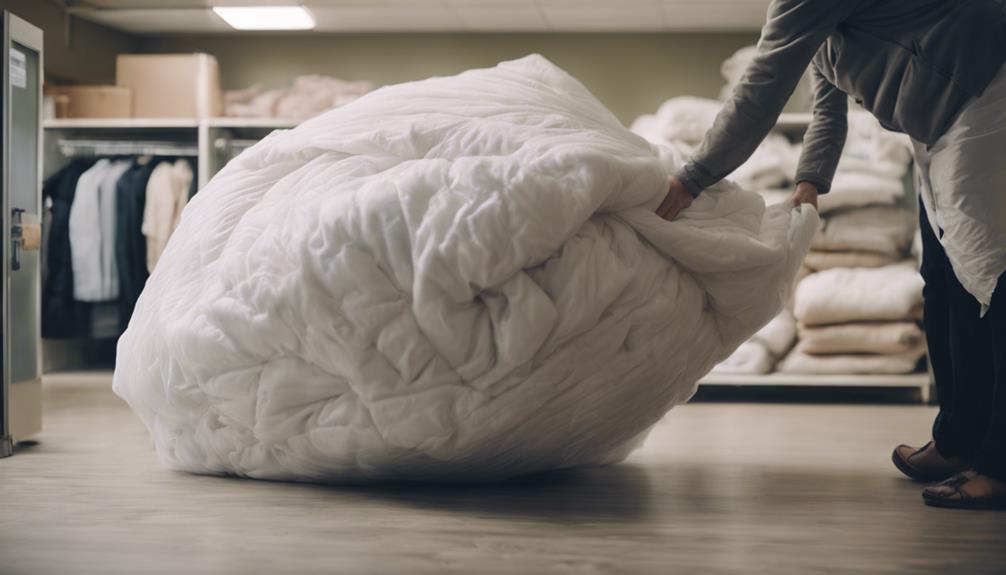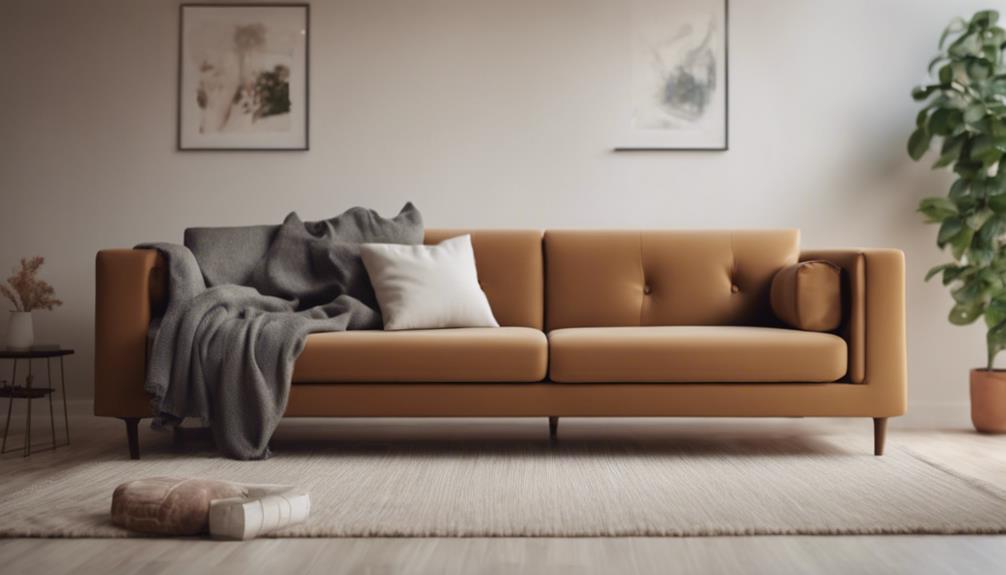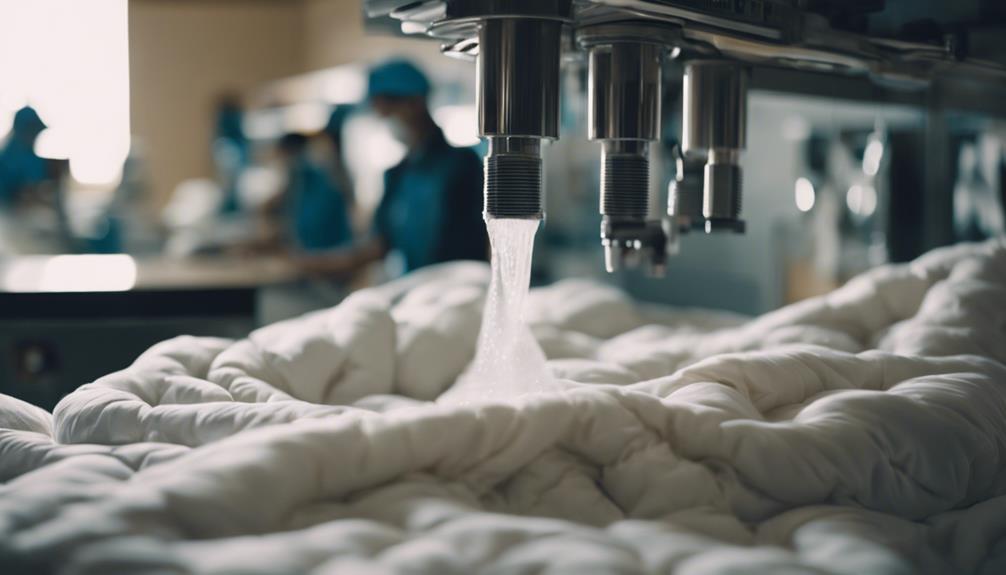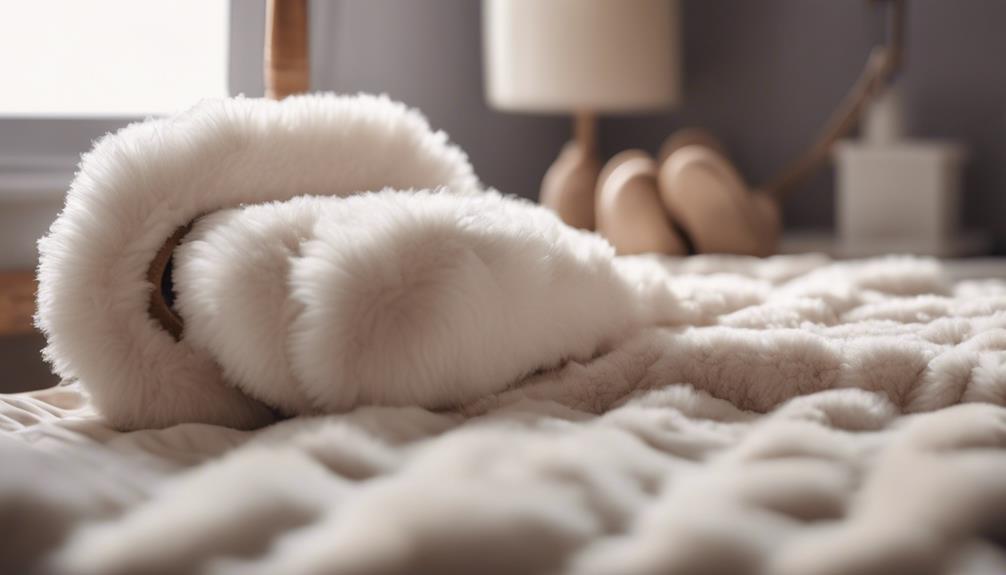Taking your comforter to a professional dry cleaner is an excellent way to thoroughly clean and maintain its quality. Dry cleaning is effective in removing dirt, dust mites, and stains, while also preserving colors and keeping the comforter looking vibrant. Delicate fabrics such as wool, silk, cashmere, or down benefit greatly from the gentle dry cleaning process, as it helps prevent shrinkage, maintains shape, and keeps the fabric fluffy. It is important to follow the care label instructions for optimal results. Interested in learning more about the advantages of professional dry cleaning and proper care for delicate fabrics?
Key Takeaways
- Yes, professional dry cleaners are equipped to clean comforters effectively.
- Dry cleaning preserves comforter quality, colors, and shape.
- Delicate fabrics like wool, silk, or down benefit from dry cleaning.
- Dry cleaning eliminates dirt, dust mites, and stains at the fiber level.
- Regular dry cleaning recommended to maintain comforter freshness and appearance.
Benefits of Professional Dry Cleaning
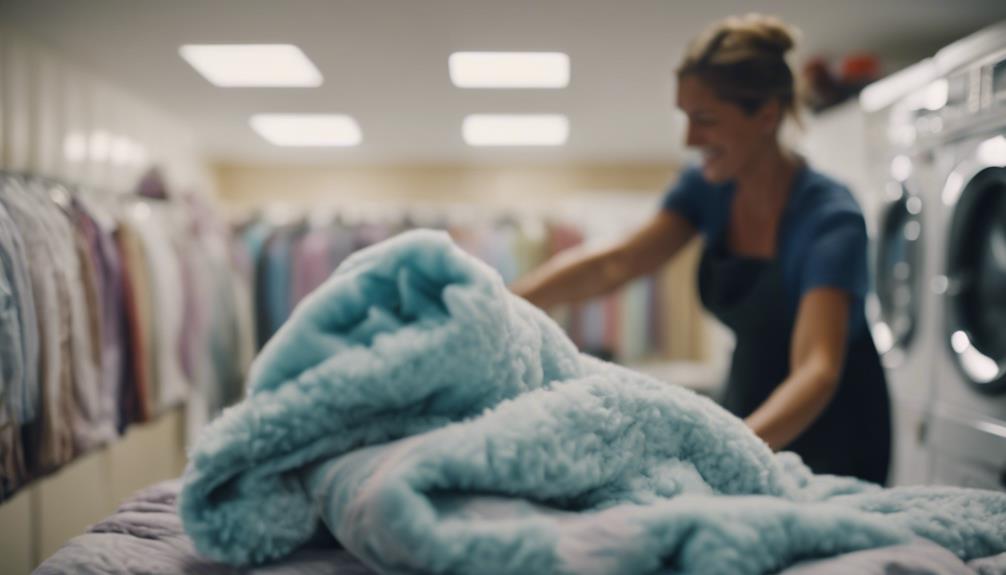
When it comes to keeping our comforters clean and well-maintained, opting for professional dry cleaning offers unmatched benefits. Professional dry cleaning is a highly effective method for thoroughly cleaning comforters, eliminating dirt, dust mites, and stains right down to the fiber level. This process guarantees a deep clean that's hard to achieve through regular washing at home. Additionally, dry cleaning helps preserve the colors of your bedding, preventing fading even after multiple washes, and maintaining its vibrant appearance.
Another advantage of utilizing professional dry cleaning services for comforters is the preservation of their shape and fluffiness. Lumps and twists that can occur during at-home washing are avoided with dry cleaning, ensuring that your comforter stays in its original form. Moreover, dry cleaning protects your washing machine from potential damage caused by overloading with heavy and bulky bedding items.
Proper Care for Delicate Fabrics

When caring for delicate fabrics such as wool, silk, cashmere, or down comforters, it's essential to follow specific guidelines to maintain their quality. Proper care includes considerations like dry cleaning methods, temperature settings, and suitable cleaning solvents.
Stain removal tips can also be valuable in preserving the appearance and longevity of delicate fabrics.
Fabric Types and Care
Delicate fabrics such as wool, silk, cashmere, or down require careful attention to maintain their quality. Dry cleaning is the recommended method for guaranteeing longevity and cleanliness. When these fabrics are subjected to moisture, they can lose their shape, shrink, or become damaged. Dry cleaning chemicals are designed to be gentle on delicate fabrics and remove stains effectively without causing harm.
It's important to always follow the care instructions on the fabric label to secure the best results. By dry cleaning delicate fabrics like wool at least once every three months, you can keep them looking fresh and extend their lifespan. Remember, proper care is essential for preserving the luxurious feel and appearance of these fabrics.
Dry Cleaning Considerations
Given the delicate nature of certain comforter materials like wool, silk, cashmere, or down, dry cleaning is the preferred method to guarantee their longevity and quality. Dry cleaning involves a thorough process that includes inspection, pretreatment, cleaning in a solvent tank, specific temperature drying, and finishing. This method is gentle on delicate fabrics and helps maintain their integrity.
Care label instructions should always be followed before deciding on a cleaning method to prevent damage to the comforter fibers. Machine washing can be harsh on these materials, so it's essential to opt for dry cleaning to safeguard their cleanliness and quality. Regular dry cleaning, recommended at least once every three months, is vital for preserving the delicate nature of comforters made from these materials.
Stain Removal Tips
To maintain the quality and appearance of delicate fabrics like wool, silk, cashmere, or down comforters, it's important to follow proper stain removal tips.
When dealing with stains on these fabrics, it's best to entrust the task to professional dry cleaners. These experts use specialized techniques and gentle chemical solvents to effectively remove stains without compromising the integrity of the fabric.
The dry cleaning process involves pretreatment to target stains before the actual cleaning in a solvent tank.
By availing the services of professional dry cleaners, you guarantee that tough stains are tackled effectively while preserving the delicate nature of your comforter.
Opting for a professional service guarantees proper stain removal without risking damage to your cherished fabric.
Prevent Shrinkage and Damage
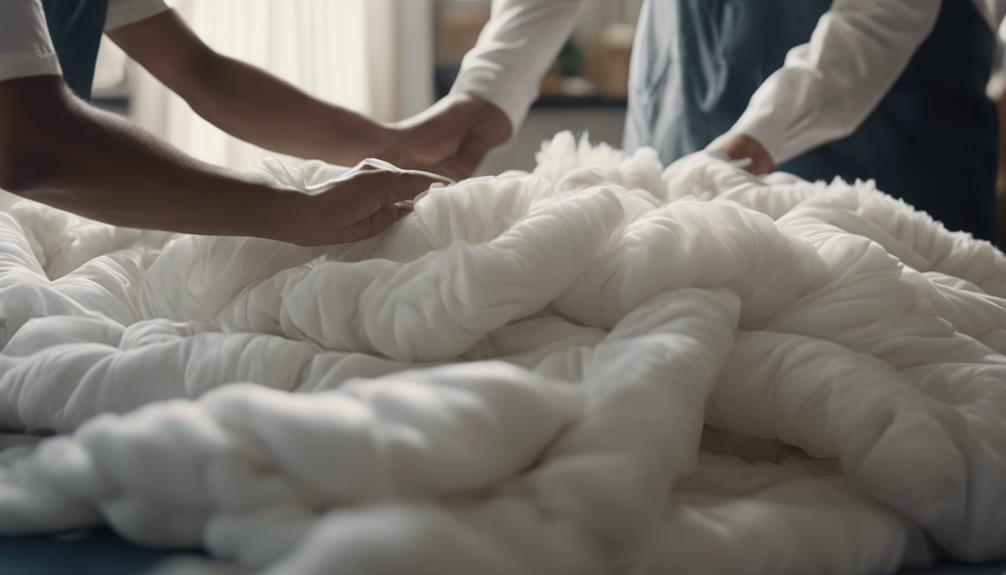
To guarantee shrinkage and damage prevention when taking a comforter to the dry cleaners, opting for professional services is essential. Dry cleaning is a suitable method as it prevents shrinkage in comforters caused by high temperatures in washers and dryers. Professional dry cleaners are trained to handle delicate materials with care, using gentle processes to avoid damaging the comforter. This guarantees that your comforter is thoroughly cleaned without compromising its quality.
- Professional Touch: Expert dry cleaners have the knowledge and tools to handle your comforter delicately.
- Peace of Mind: Knowing that your comforter is in good hands can alleviate any worries about potential damage.
- Quality Assurance: Professional dry cleaners guarantee that your comforter is cleaned effectively without compromising its integrity.
- Longevity: By opting for professional dry cleaning services, you can extend the lifespan of your comforter.
Thorough Cleaning Process

When dry cleaning a comforter, the process involves a meticulous inspection, pretreatment, cleaning in a solvent tank, drying at specific temperatures, and finishing. Professional dry cleaners are equipped to handle the intricate cleaning process required for comforters.
The cleaning process begins with a thorough inspection to identify any stains or areas needing special attention. Pretreatment is then applied to these spots to guarantee effective stain removal. The comforter is then placed in a solvent tank where it's gently agitated to lift dirt and grime from the fabric. After cleaning, the comforter is dried at precise temperatures to prevent any damage to the material. Finally, finishing touches are added to make sure the comforter looks fresh and well-maintained.
Choosing a professional dry cleaner for your comforter guarantees a deep and effective clean that removes dirt, dust, debris, and stains down to the fiber level. The use of gentle chemical solvents also ensures that delicate materials are safely cleaned without the risk of damage. The thorough cleaning process typically takes around 3-4 hours, providing you with a revitalized comforter that looks and feels like new.
Cost and Convenience of Dry Cleaning
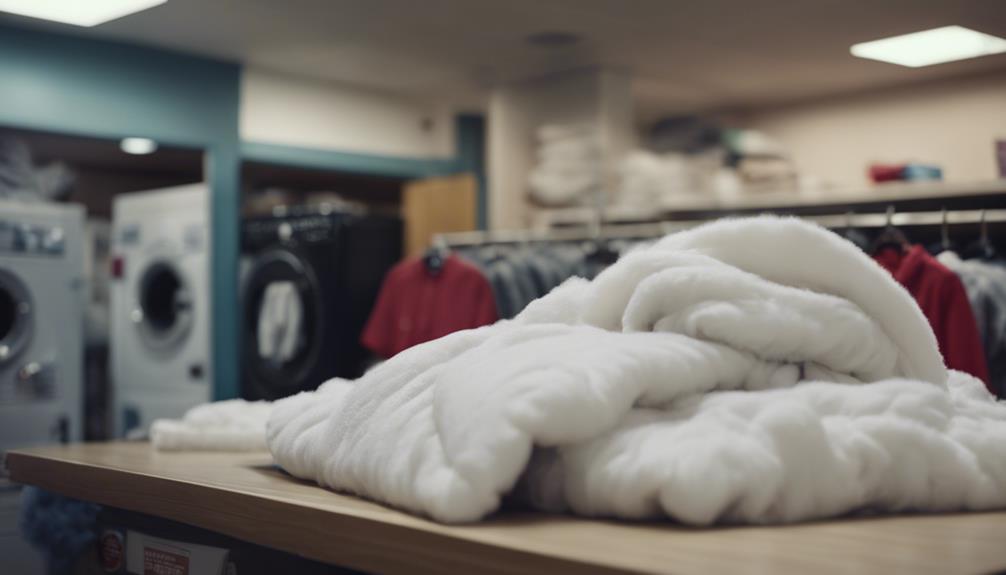
Dry cleaning a comforter offers both cost-effective and convenient solutions for maintaining its quality and cleanliness. When considering the cost, it typically ranges from $20 to $50, taking into account factors such as location, material, and size. Professional dry cleaning services such as Mr. Timesaver provide pick-up and delivery options, adding to the convenience. By opting for dry cleaning, you not only preserve the colors and quality of the comforter, preventing fading and damage, but also save time and reduce stress compared to washing at home. Additionally, dry cleaning prevents shrinking, ensuring that the comforter fits properly and maintains its warmth.
- Dry cleaning costs between $20 to $50, based on various factors.
- Professional services like Mr. Timesaver offer pick-up and delivery for added convenience.
- Preserves colors and quality, preventing fading and damage.
- Saves time, reduces stress, and maintains proper fit and warmth.
How Often to Dry Clean
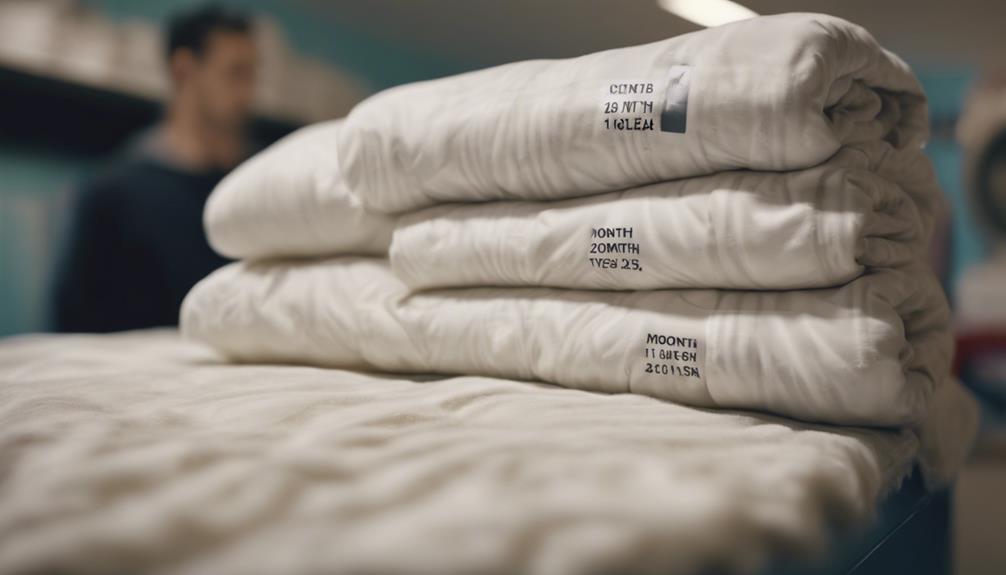
Regular professional cleaning of your comforter is important to maintain its cleanliness and freshness. When it comes to how often to dry clean your comforter, it is recommended to do so at least once or twice a year. Professional cleaning plays a significant role in removing sweat, skin flakes, and dust mites that can accumulate in comforters over time. House dust mites, in particular, can be eliminated at temperatures above 60 degrees Celsius, highlighting the importance of proper cleaning practices. Different comforter materials may necessitate specific cleaning methods to uphold their quality and longevity. Adhering to the care label instructions provided with your comforter is essential in determining the frequency at which it should be dry cleaned.
| Comforter Cleaning Frequency | Recommendation |
|---|---|
| How often to dry clean? | At least once or twice a year |
| Importance of professional cleaning | Removes sweat, skin flakes, and dust mites |
| Impact of temperature on dust mites | House dust mites die above 60 degrees Celsius |
Machine Wash Vs. Dry Clean
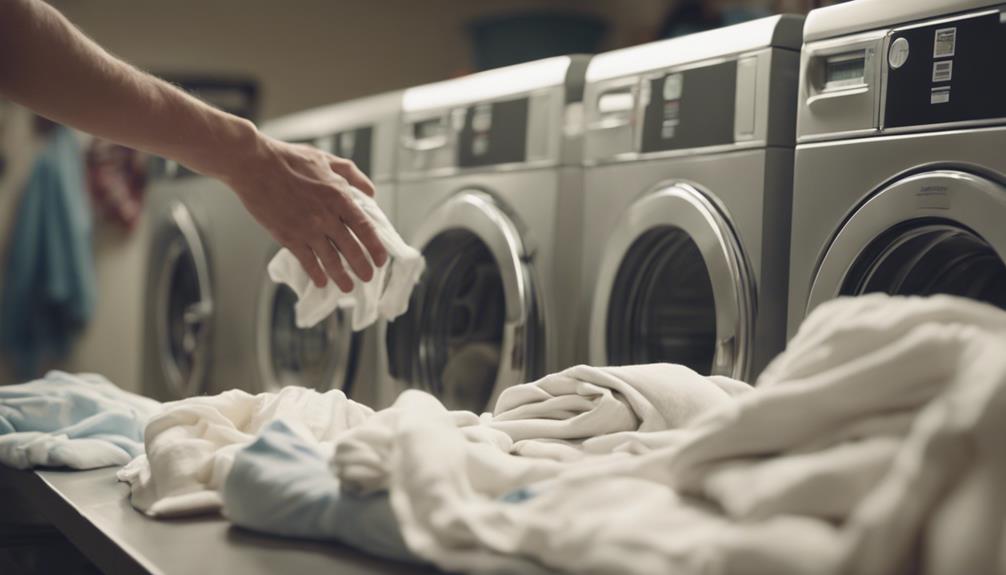
For ideal care of your comforter, understanding the differences between machine washing and dry cleaning is essential. When deciding between the two methods, consider the following:
- Preservation: Dry cleaning preserves delicate materials like wool, silk, cashmere, or down by using gentle chemical solvents, ensuring the longevity of your comforter.
- Potential Damage: Machine washing can be damaging to certain fibers and should only be done if permitted by the care label to avoid compromising the quality of your comforter.
- Process Time: Dry cleaning a comforter typically takes 3-4 hours and involves thorough inspection, pretreatment, cleaning in a solvent tank, drying, and finishing.
- Care Label Importance: Following the care label instructions is vital for maintaining the quality and longevity of your comforter, whether you opt for dry cleaning or machine washing.
Best Practices for Comforter Care
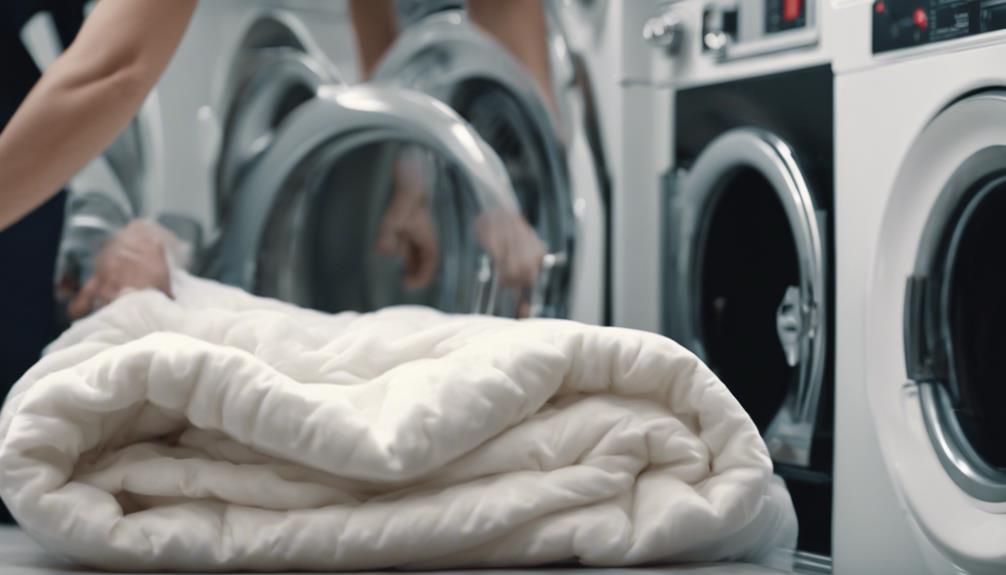
Implementing proper care practices is vital for maintaining the quality and longevity of your comforter. When it comes to delicate materials such as wool, silk, cashmere, or down comforters, dry cleaning is highly recommended to preserve their integrity. Dry cleaning involves a meticulous process that includes inspection, pretreatment, cleaning in a solvent tank, specific temperature drying, and finishing for a thorough cleanse. This method typically takes 3-4 hours and utilizes gentle chemical solvents to make certain the fabric's delicate fibers aren't compromised.
It's important to note that machine washing can be damaging to certain comforter fibers, so it should only be considered if explicitly permitted by the care label instructions. To guarantee a clean and long-lasting comforter, always adhere to the care label guidelines provided by the manufacturer. By following these best practices, you can help maintain the quality and extend the lifespan of your beloved comforter.
When to Dry Clean Duvet Cover

When deciding when to dry clean your duvet cover, it's important to take into account factors like dry cleaning frequency, addressing stains and spills promptly, and following fabric care tips.
Regular dry cleaning can help maintain the cleanliness and quality of your duvet cover, especially if spills or stains occur. By adhering to fabric care instructions and handling stains effectively, you can guarantee that your duvet cover remains in good condition for a longer period.
Dry Cleaning Frequency
Maintaining the cleanliness and quality of your duvet cover is vital, and a key aspect of this is determining the appropriate frequency for dry cleaning it. Dry cleaning your duvet cover once or twice a year not only helps in keeping it clean but also eliminates house dust mites that can accumulate over time.
These tiny pests can harbor allergens, making regular dry cleaning important for a hygienic sleeping environment. By following the recommended dry cleaning frequency, you can prevent odors and guarantee that your duvet cover maintains its appearance for an extended period.
Proper dry cleaning also plays a significant role in preserving the colors and fabric of your duvet cover, ultimately prolonging its lifespan.
- Regular dry cleaning eliminates dust mites and allergens, ensuring a hygienic sleeping environment.
- Following the recommended dry cleaning frequency prevents odors and maintains appearance.
- Proper dry cleaning helps in preserving colors and fabric, extending the duvet cover's lifespan.
- House dust mites can accumulate in duvet covers, making regular dry cleaning important.
Stains and Spills
To guarantee the longevity and cleanliness of your duvet cover, addressing stains and spills promptly may necessitate utilizing professional dry cleaning services for effective removal. Dry cleaning is recommended for tough stains that can't be spot cleaned at home. Professional services guarantee thorough stain removal without damaging the fabric.
This method is especially beneficial for delicate materials like silk or wool, as it helps maintain quality and appearance. Dry cleaning also prevents color fading and shrinkage that can occur with home washing. Following care label instructions for dry cleaning duvet covers can help prolong their lifespan and keep them looking fresh and clean.
When dealing with stubborn stains or spills, opting for dry cleaning is a reliable solution for maintaining the beauty of your duvet cover.
Fabric Care Tips
For some duvet covers, professional dry cleaning may be necessary to guarantee proper fabric care and longevity. While many duvet covers can be conveniently machine washed at home, delicate materials like silk or satin may benefit from dry cleaning to maintain their quality.
When deciding whether to dry clean your duvet cover, consider the fabric type and any specific care instructions provided. Here are some key points to keep in mind:
- Machine Washing: Suitable for most duvet covers, offering convenience for regular cleaning.
- Care Labels: Following instructions ensures proper cleaning and extends the lifespan of your duvet cover.
- Dry Cleaning Benefits: Preserves colors, prevents fading, and ensures a fresh, clean appearance.
- Fabric Consideration: Delicate materials may require dry cleaning to maintain quality.
Avoiding Issues With Machine Washing

When machine washing comforters, it's essential to prioritize gentle care to preserve their quality and longevity. House dust mites survive in bedding, so thorough cleaning is vital.
Before deciding between Machine Wash or Dry Clean, consider the material of the comforter. Delicate fabrics like wool, silk, and cashmere may require professional dry cleaning to avoid damage.
Moisture can impact the integrity of the comforter's fibers, so it's important to use the appropriate washing cycle and temperature. Improper machine washing can result in shrinkage, stretching, or loss of fluffiness in the comforter.
Colors may fade or bleed if not washed correctly, affecting the overall appearance. While synthetic comforters can often be machine washed, tough stains may not be as effectively removed compared to dry cleaning.
Always adhere to the care label instructions to prevent fabric damage or deformation during the washing process.
Frequently Asked Questions
Can Dry Cleaners Clean a Comforter?
Yes, dry cleaners can effectively clean a comforter. The process includes inspection, pretreatment, cleaning in a solvent tank, drying at specific temperatures, and finishing. This typically takes 3-4 hours and uses gentle chemical solvents to maintain fabric quality.
Machine washing can damage certain comforter fibers, so dry cleaning is recommended for best care. Costs range from $20 to $50, depending on factors like location, material, and size.
Is Dry Cleaning a Comforter Expensive?
Dry cleaning a comforter can range from $20 to $50, depending on various factors. Additional costs may apply for repairs during the process.
Duvet covers can protect comforters and reduce cleaning expenses. Following care labels can extend a comforter's lifespan.
While dry cleaning may seem costly initially, it's an investment in maintaining your comforter's quality and cleanliness.
How Much Does It Cost to Wash a Comforter?
Ensuring to follow care label instructions is crucial in maintaining the quality of the comforter.
Repairing holes, rips, loose seams, or stains may incur additional costs during the cleaning process.
Duvet covers can protect the comforter and potentially reduce cleaning expenses.
Keep in mind that machine washing down comforters can harm their natural coating, affecting softness and fluffiness.
How to Clean a Large Comforter?
We clean large comforters by following care instructions, separating by color, and using appropriate detergents.
Spot treat stains, pre-soak if needed, then wash on a gentle cycle. Avoid overloading the washer to guarantee thorough cleaning.
After washing, dry on low heat or air-dry to prevent damage. For delicate materials like wool or down, consider professional dry cleaning services.
Proper care extends the comforter's lifespan and maintains its quality.
Is It Safe to Take My Comforter to the Dry Cleaners for Cleaning?
If you’re wondering about the safety of your comforter at the dry cleaners, rest assured that it’s perfectly safe to dry clean comforters now. Professional dry cleaners use gentle, specialized techniques to clean and preserve your comforter, so you can enjoy a fresh and clean bedspread without any worries.
Conclusion
To sum up, entrusting your comforter to a professional dry cleaner can provide a deep and thorough cleaning process, preventing shrinkage and damage to delicate fabrics. This convenient and cost-effective option guarantees your comforter receives the proper care it deserves.
By avoiding machine washing and following best practices for comforter care, you can maintain the quality and longevity of your bedding. Choose the smart and efficient option of dry cleaning for a fresh and clean comforter every time.
